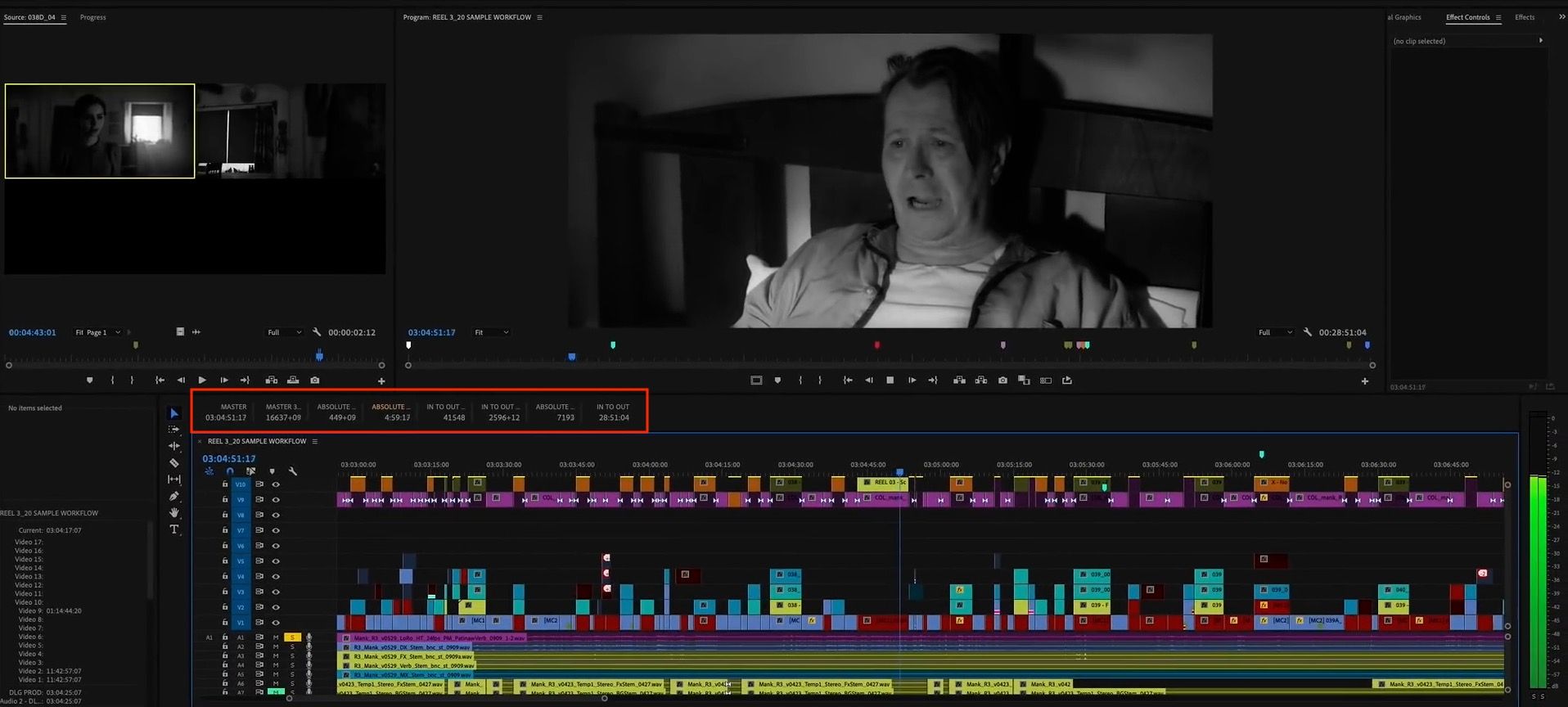#106 - Editor Kirk Baxter breaks down a scene from Mank

I chose this scene because I love the comedic timing of it all.
And how many things are taking place at the same time.
— Kirk Baxter, Editor
One of the best ways to understand why an editor made the choices they did, is to hear them talk through a scene telling you why they made the choices they did.
Ce n'est pas sorcier.
In this issue of Cut/daily I take a look at some insights that can be gleaned from editor Kirk Baxter's breakdown of a scene from Mank, which was cut on Adobe Premiere Pro.
Watch Mank for yourself on Netflix.

At one point in the video you get to see Kirk's timeline for the scene, which includes cool looking timecode displays for different tracks and parameters (Absolute or In to Out)
If you're not used to having this window open, as I was not, then you might not have known that it lives under Window > Timecode
You can configure it as you wish, including saving custom presets.
Inside a Scene with Editor Kirk Baxter
I really enjoyed these few minutes with Kirk, not least because the performances from all the actors are so good, but also because it's so well edited.
This opening's a nice little study on what a gift Fincher is to a film editor. How many angles he can provide.
I think I had four or five angles on Rita’s entrance, so you never just restricted to cutting back to the same size, and ping-ponging.
— Kirk Baxter
1. Use the size of your shots purposefully
Set the stage with wide shots to establish the geography of the scene and then "slowly start dialling in to close ups, as the pressure builds."
At one point Kirk mentions a performance in a take that he 'built the scene around, it was a must have'.
It's interesting that there's no right way to begin editing a scene, some start with the first line and work linearly, others pick a key moment and work towards or back from that.
2. Beware predictable rhythms
Fincher gave me a note to make this “a little sloppier”, which achieved by taking out of one of Houseman's lines so that it stopped the pattern of
Houseman says something
Mank reacts
Rita reacts to Mank.
With one less, it was a bit more unpredictable, with how it unfolded.
— Kirk Baxter
3. Fincher Split Screens
Fincher loves to use split screens and speed ups, to keep the pace up and to have granular control over the timing of the performances.
What I liked about this example was that Kirk explained why he used it to speed up Rita's listening section between two of her lines so that her response to Mank (her second line) comes in much faster and keeps the whole argument moving "at a very sharp clip", rather than having to keep the pace up by "cutting back and forth each time someone says something".
Questions to ask of an Edit
If you take this scene and break it down, shot by shot, you can learn a lot by asking these kinds of questions:
- How many shots are there and are they wide, medium or close up? When are close ups used and why?
- How long is each shot and what is the rhythm of the timing over the scene?
- Is dialogue on or off camera, what lines do we see the speaker or the listener?
- When does music start or stop within the scene? How does sound design play a role?
- Do actions move across shots or complete within them, why?
Take This Further
#011 - Three Ways to Watch a Movie Intentionally
#045 - Editing for David Fincher
Editor Tom Cross breaks down several scenes from First Man, Whiplash and La La Land in this course from MZED
So remember, watch and cut daily.
